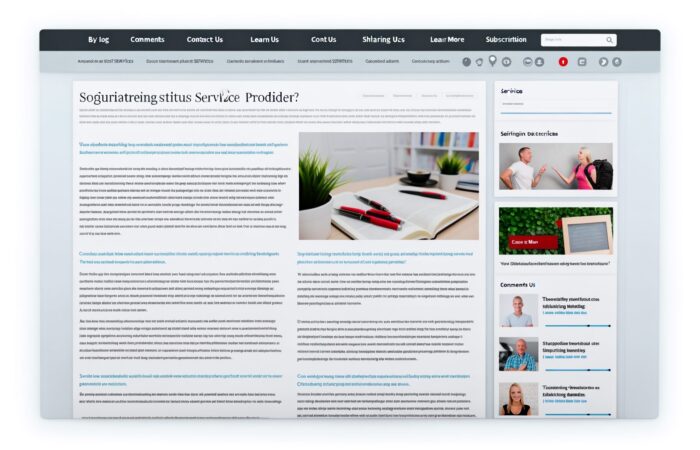Unmasking the Power Of Content Strategy
Ever wondered why some brands always seem to have their messages resonate with audiences while others struggle? Or why some individuals consistently churn out blog posts, podcasts, or YouTube videos that attract thousands, if not millions, of followers? The secret is not magic, but rather a well-crafted, intentional content strategy.
What Exactly is a Content Strategy?
A content strategy is essentially a game plan outlining how a brand uses content to engage, inform, and ultimately convert its audience. It encompasses everything from search engine optimized (SEO) blog posts and informative YouTube videos, to engaging social media updates and valuable email newsletters. A content strategy is a key part of the broader digital marketing strategy, aimed at helping brands connect with their audiences in meaningful ways.
Why Is Content Strategy So Important?
- Building Brand Authority: Consistently publishing high-quality content positions your brand as an expert in your field. This builds trust and credibility with your audience.
- Boosting SEO: A well-thought-out content strategy can significantly improve your website’s visibility on search engines, leading to increased organic traffic.
- Generating Leads: Engaging content can act as a magnet, pulling in potential customers and keeping them interested in your brand, and ultimately converting them into buyers.
- Building Relationships: Through consistent and relevant content, you can nurture a relationship with your audience, encouraging loyalty and repeat business.
Clearly, a content strategy is not just a nice-to-have, but a necessity for any brand looking to succeed in the digital age.
Is it Worth the Effort?
You might be wondering, “But isn’t creating a content strategy a lot of work?” Well, yes and no. It does require a fair bit of upfront effort and planning. However, the payoff is often well worth it. According to the Content Marketing Institute, content marketing costs 62% less than traditional marketing but generates about 3 times as many leads. Now, that’s a return on investment worth considering!
In a Nutshell
Think of a content strategy as a roadmap to success in your digital marketing journey. It helps you understand where you want to go (your goals), who you’re speaking to (your audience), and what you need to say (your content). By delivering valuable content that resonates with your audience, you can build trust, authority, and ultimately drive business growth. So why not start crafting your content strategy today?
Understanding Your Target Audience
Imagine throwing a party without knowing what kind of music your guests like, what food they enjoy, or even what time they prefer to party. It’s not going to be much of a party, right?
Similarly, creating content without a clear understanding of your target audience is like shooting in the dark. You might hit the mark occasionally, but most times, you’re bound to miss. And that’s why understanding your audience is the first crucial step in any successful content strategy.
So, who exactly is your target audience?
Your target audience refers to the group of people who are most likely to be interested in your products or services. They are the ones who find your content helpful, engaging, and worth their time. The better you understand them, the more effective your content strategy will be.
How do you get to know your audience?
The following steps can guide you through the process:
- Creating Audience Personas: This involves creating a fictional, generalized representation of your ideal customer. The persona should include details like demographics, behavior patterns, motivations, and goals.
- Conducting Surveys and Interviews: Directly asking your existing customers about their needs, preferences, and dislikes can give you valuable insights.
- Using Analytics: Tools like Google Analytics can help you understand your audience’s behavior, like the kind of content they consume, their browsing habits, etc.
- Social Listening: Monitor social media platforms to understand what your audience is saying about your brand and your competitors. This can help you learn about their pain points, needs, and interests.
Why is understanding your audience crucial?
To connect with your audience, you need to speak their language. And to speak their language, you need to understand them. When you truly understand your audience, your content will resonate with them. It will answer their questions, solve their problems, and meet their needs. This will lead to increased engagement, trust, and ultimately, conversions.
Moreover, understanding your audience will guide your entire content strategy, from topic selection and content creation to distribution and promotion.
So, before you dive into content creation, take the time to truly understand your audience. It’s like getting to know a friend. The more you learn about them, the stronger your relationship becomes. And in the world of content marketing, strong relationships are the key to success!
Identifying Your Unique Niche
Finding your unique niche is like discovering a secret passage in an old castle. It’s exciting, thrilling, and opens up a world of possibilities. But how exactly do you go about finding your niche? Well, let’s dive in!
Know Your Passion
Firstly, it’s important to acknowledge what you are truly passionate about. This isn’t just about what you like or enjoy, but something deeper. It’s about finding the topic that you could happily and effortlessly talk about for hours. Remember, your passion fuels your content, and genuine enthusiasm is infectious. People can tell when you’re genuinely interested in something, and it’ll make them more interested too.
Research the Market
Next up, it’s crucial to understand the marketplace. For this, you need to dig into your industry, niche, and audience. What are they interested in? What do they need? And most importantly, what gaps can you fill? Exploring online forums, blogs, and social media platforms can provide you with invaluable insights.
Define Your Unique Spin
One size doesn’t fit all in content creation. You’ll need to bring something unique to the table. What’s your special sauce? Maybe it’s your distinctive voice, your unusual perspective, or your knack for making complex topics simple. Whatever it is, your unique spin is the key to standing out from the crowd.
Evaluate the Competition
Even if you’re passionate about a topic and have a unique spin, it won’t mean much if there are already hundreds of others doing the same thing. That’s why it’s important to evaluate your competition and find a niche that isn’t oversaturated. Look at what others are doing, but don’t copy them. Instead, find ways to differentiate yourself and offer something that isn’t already out there.
Test Your Idea
Finally, before you jump in with both feet, it’s a good idea to test your concept. Perhaps you can start a small blog, or social media account to gauge audience interest. Pay close attention to the feedback you receive, and use it to refine your niche and your approach.
- Know your passion: Be true to yourself and find a topic that you’re passionate about.
- Research the market: Understand your audience and find out what they’re interested in.
- Define your unique spin: Find what makes you different and use it to stand out.
- Evaluate the competition: Make sure the niche you choose isn’t oversaturated.
- Test your idea: Gauge audience interest before fully committing to a niche.
In conclusion, finding your unique niche isn’t just about picking a topic. It’s about finding the intersection of your passion, market demand, and a unique spin that makes you stand out in the crowd. It might take some time and effort, but the result is a content strategy that resonates with your audience and truly represents who you are.
Key Elements of a Successful Content Strategy
Building a robust content strategy is no small feat. It’s like preparing a recipe: you need the right ingredients, in the right amounts, mixed in the right order. So, what are these ‘ingredients’? Let’s dive straight into the essentials of a potent content strategy!
1. Clear, Defined Goals
Imagine setting out on a journey with no destination in mind. Sounds adventurous, right? But when it comes to your content strategy, it’s a sure-fire way to get lost. Your content goals should be the GPS guiding your strategy. They could range from increasing site traffic, boosting brand visibility, fostering customer engagement, or driving sales. The crucial point is, they should be S.M.A.R.T – Specific, Measurable, Achievable, Relevant, and Time-bound.
2. Consistent and High-Quality Content
Consistency is key in content strategy. But it’s not just about regularly churning out content. It’s about maintaining a consistent tone, style, and quality across all your content. High-quality content is informative, engaging, and adds value to your audience. It’s what sets you apart from your competitors and keeps your audience coming back for more.
3. SEO Optimization
Producing great content is just half the battle. The other half is making sure your content gets seen. That’s where Search Engine Optimization (SEO) comes in. SEO involves using keywords, meta descriptions, and backlinks to improve your content’s visibility in search engine results. Remember, the higher your content ranks on search engines, the more traffic you’ll attract to your site.
4. A Thorough Content Distribution Plan
Content distribution is the ‘delivery van’ that brings your content to your audience. Your distribution plan could involve a mix of owned, earned, and paid channels, depending on your goals and resources. The critical thing is to share your content where your audience spends most of their time, whether it’s on social media, blogs, email newsletters, or your website.
5. Regular Content Evaluation and Adaptation
A successful content strategy is not a set-and-forget task. It requires consistent monitoring, evaluation, and tweaking. Keep a close eye on your content’s performance and adapt your strategy based on the insights you gather. In the world of content marketing, it’s always about learning, growing, and evolving.
In conclusion, a successful content strategy is built on clear goals, consistent high-quality content, SEO optimization, a thorough distribution plan, and regular evaluation and adaptation. Remember, your content is a reflection of your brand, so make sure it’s the best it can be!
Tools and Resources for Content Creation and Management
Great, you’ve got the basics down! You know your audience and you’ve found your niche. But, how do you actually create and manage all this content? Don’t worry, we’ve got you covered. Here are some top-notch tools and resources to help you in your journey to create compelling, engaging content.
Content Creation Tools
You don’t need to be a professional designer or writer to create high-quality content. Luckily, the digital age has given us a plethora of tools to make content creation more accessible than ever.
- Canva: Canva is a graphic design tool that is easy to use and offers a wide range of templates, perfect for creating social media graphics, infographics, presentations, and more.
- Grammarly: This writing assistant helps you eliminate errors and find the perfect words. It’s a great tool for proofreading and improving your writing style.
- Unsplash: Need stunning, royalty-free images for your content? Unsplash is your go-to resource. It offers a vast collection of beautiful photos you can use for free.
Content Management Tools
Creating content is one thing. Managing it effectively is a whole different ball game. Here are some tools to help you maintain and manage your content.
- WordPress: This platform offers a user-friendly interface for publishing and managing blog posts and website content. It also has various plugins to help improve your SEO, social media integration, and more.
- Hootsuite: Want to schedule and manage your social media posts in one place? Hootsuite is the tool for you. It supports various platforms like Facebook, Twitter, Instagram, LinkedIn, and more.
- Google Analytics: Understanding how your content is performing is essential. Google Analytics provides comprehensive data about your website’s traffic, audience behavior, and more.
Remember, the right tools can simplify the content creation and management process, save time, and help produce more professional results. So, it’s worth investing in them and knowing how to use them efficiently.
But don’t forget, no tool can replace the value of original, valuable content. So, make sure you focus on creating content that resonates with your audience and meets their needs. The tools are there to support and enhance your efforts, not replace them.
Measuring the Success of Your Content Strategy
Wondering how well your content strategy is working? The key is to measure its success regularly. In fact, it’s just as essential as creating the strategy itself. Without constant measurement, you won’t know if your hard work is paying off or if you need to tweak your approach. But don’t worry, fellow marketer! We’re here to guide you through the whole process.
Define Your Goals
The first step is to define your goals. What are you trying to achieve with your content strategy? Is it brand awareness, lead generation, customer retention, or increased sales? Each goal requires its own set of metrics to measure success. You can’t measure everything, so decide what’s most important and stick to it.
Choose the Right Metrics
Once you’ve defined your goals, it’s time to pick the right metrics to track. These are often called KPIs (Key Performance Indicators). Let’s break it down:
- For brand awareness: You might want to track social media shares, likes, comments, mentions, and website traffic.
- For lead generation: Look at the number of new email subscribers, form completions, and click-through rates.
- For customer retention: Pay attention to the number of returning visitors, customer feedback, and customer lifetime value.
- For sales: Keep an eye on your conversion rates, average order value, and overall revenue.
Remember, the right metrics depend on your specific goals. Don’t get overwhelmed by the plethora of data available. Focus on what’s relevant to your objectives.
Use the Right Tools
Using the right tools is crucial in measuring the success of your content strategy. Google Analytics is a must for tracking website metrics. Social media platforms also provide their own analytics. Email marketing software can give you valuable insights into your leads. Don’t forget about SEO tools that can help you understand your search engine performance.
Analyze and Adapt Your Strategy
Finally, after you’ve gathered the data, it’s time to analyze it. Look for trends, patterns, and areas of success or improvement. This analysis will not only give you insight into how well your strategy is working, but it will also inform your future strategy. Remember, a content strategy is not a set-it-and-forget-it thing. It’s a dynamic plan that needs to adapt and evolve as you learn more about what works and what doesn’t.
In conclusion, measuring the success of your content strategy is not a daunting task if you have clear goals, the right metrics, the right tools, and the willingness to adapt. So, are you ready to take your content strategy to the next level?
Adapting and Evolving Your Strategy Over Time
There’s a classic saying: “Change is the only constant in life.” This couldn’t be more relevant when it comes to content strategy. Your content strategy can’t remain static if you want to thrive in the dynamic digital landscape. It needs to continually evolve and adapt to meet the changing demands of your audience and industry trends. But, how do you do that? Here are some friendly advice and tips to guide you.
Keep an Eye on Your Metrics
First up, monitoring your analytics is key. How are people interacting with your content? Which pieces are performing well, and which ones aren’t? Use tools like Google Analytics to track and analyze user behavior. That way, you can see what works and what doesn’t, then adjust your strategy accordingly.
Listen to Your Audience
Stay in touch with your audience’s needs and interests. They may change over time, and your content should reflect that. Monitor the comments on your posts, conduct surveys, or engage with your audience on social media to understand their changing preferences. By engaging with your audience, you can adapt your content strategy to provide value and keep them coming back for more.
Stay Current with Industry Trends
Keeping an eye on industry trends is also crucial. What’s hot today may be old news tomorrow. Therefore, staying current with trends can give you a head start in producing relevant content. Follow leading industry blogs, subscribe to newsletters, and participate in webinars and conferences to keep your knowledge up to date.
Experiment and Innovate
Don’t be afraid to experiment with your content. Keep the tried and tested, but also introduce new content types, formats, or themes. Maybe a podcast or a series of infographics could resonate with your audience? Innovation keeps your content fresh and exciting.
Regular Reviews and Updates
Finally, make it a habit to conduct regular reviews of your content strategy. What worked six months ago may not work now. Regularly reviewing and updating your strategy ensures you’re always serving your audience the best possible content.
Remember, the key to a successful content strategy is flexibility and adaptability. So, keep your fingers on the pulse of your audience’s preferences, stay informed about industry trends, and don’t be afraid to innovate. Here’s to your evolving and ever-improving content strategy!











No Comment! Be the first one.